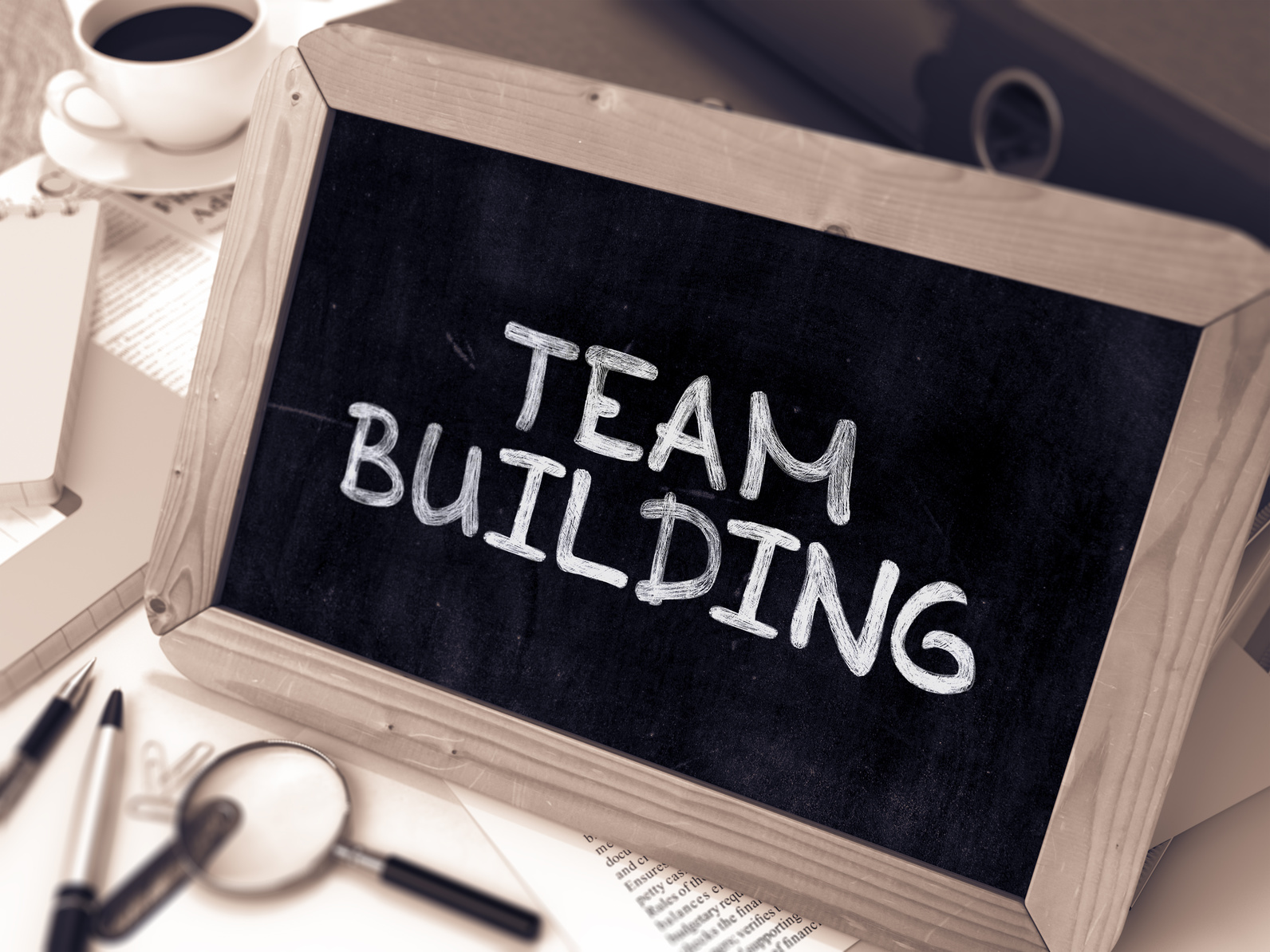Engaging school assembly programs are the cornerstone of a vibrant educational experience, offering a unique blend of entertainment, inspiration, and learning that resonates with students of all ages.
These assemblies are not just a break from the regular classroom routine; they are a dynamic platform where creativity meets education, sparking curiosity and fostering a sense of community among students and educators alike.
From motivational speakers and interactive science shows to cultural performances and environmental workshops, engaging school assembly programs are designed to enrich the school curriculum, addressing a wide range of topics in a way that is both informative and captivating.
As schools constantly strive to enhance student engagement and promote a positive school culture, these programs emerge as a key ingredient in the recipe for educational success, making every assembly an opportunity for growth, discovery, and fun.
As a school administrator or PTO President, you understand that inspiring students is essential for their academic and personal development.
One way to achieve this is through engaging school assembly programs that fuel the spirit of your school.
By incorporating creativity and fun into your school assembly program, you can make it an unforgettable experience for your students.
Not only will this enhance your school’s overall atmosphere, but it will also foster a sense of community and belonging among students, staff and faculty.
Book a Live Game Show!
[Best Team Building Games - We Come to Your Location - 100% Satisfaction Guaranteed - Click Below - SERIOUS INQUIRIES ONLY]
Key Takeaways
- Engaging school assembly programs can inspire, motivate, and educate students.
- Incorporating creativity and fun into your assembly program can make it an unforgettable experience for students.
- Engaging assemblies foster a sense of community and belonging among students, staff and faculty.
- A successful assembly program can enhance your school’s overall atmosphere.
- School assembly programs are an important component of the educational experience.
Why Assembly for Schools Matter
Assemblies are an essential component of a school’s educational program. They offer a unique opportunity to bring students together for a shared experience that can be both educational and entertaining. Educational assembly programs, interactive assembly programs, and engaging assembly programs are all vital components of a school’s curriculum.
Assembly programs allow students to learn from guest speakers who bring their unique experiences and perspectives to share and help students broaden their understanding of the world. They also offer opportunities to teach students important life skills, moral values, and character development through interactive and engaging activities that make learning fun and memorable.
“Assemblies provide a platform to engage students in ways that traditional classroom learning cannot.”
According to a survey conducted by the National Assembly of School Administrators, assembly programs are among the most effective ways to improve student engagement and deliver educational content effectively.
Engaging assembly programs provide an opportunity for students to explore new ideas and experiences while fostering a sense of community and school spirit. With interactive activities, students are better able to participate in the learning process and retain important lessons.
An assembly program where students are actively participating and engaged in various activities such as group discussions, hands-on experiments, and team-building exercises. The atmosphere is lively and dynamic, with bright colors and energetic movements. Students are shown to be having fun while learning important skills and values such as teamwork, communication, and problem-solving. The focal point of the image is the students themselves, with the presenter or teacher taking a supportive and encouraging role in the background.
1 – The Benefits of Educational Assembly Programs
Educational assembly programs are an excellent way to supplement classroom learning and offer students a unique perspective on a particular topic. Topics can range from science and history to global issues and the arts. Many speakers provide visually stimulating presentations to keep students engaged while teaching new and interesting concepts. These programs often appeal to a wide variety of students and inspire them to pursue their interests outside of the classroom.
2 – The Benefits of Interactive Assembly Programs
Interactive assembly programs provide students with an opportunity to learn in a fun and engaging way. These programs usually consist of hands-on activities and group discussions, allowing students to actively participate in the learning process.
Engaging in these activities, students retain more information, and the lesson is more likely to stick with them.
3 – The Benefits of Engaging Assembly Programs
Engaging assembly programs often have a personal or emotional appeal to the students. They can inspire students to create positive change, encourage them to cultivate academic and personal goals, and persuade them to respect others’ views.
Emotional appeal in assembly programs can leave a lasting impression on a student’s mind and significantly impact their academic journey.
4 – Inspiring Character Assembly Programs
If you want to create a lasting impact on your students, character assembly programs should be on top of your list. Through character assembly programs, you can guide your students in developing positive traits and values, such as respect, honesty, and empathy, among others. These programs provide a unique opportunity for students to learn from role models and inspirational figures.
One way to create an engaging character assembly program is to invite a guest speaker who has overcome adversity and can share their story with your students.
Listening to someone who has faced challenges and persevered can inspire students to believe in themselves and their abilities.
“Character is doing the right thing, even when nobody is looking.” – J.C. Watts
Another idea is to organize a peer-to-peer mentorship program, where older students can share their experiences and offer guidance to younger students.
This can help foster a sense of community and provide opportunities for students to develop leadership skills.
To make your character assembly program even more engaging, you can incorporate creative activities that reinforce positive traits and values.
For example, you can organize a poster-making contest that encourages students to reflect on the importance of kindness and respect in their daily interactions.
Remember, character assembly programs should be designed to inspire and motivate students to become the best version of themselves.
Providing opportunities for students to learn from role models, share their experiences, and engage in creative activities, you can create memorable and impactful character assembly programs.
Motivational Assembly Programs for Student Success
If you want to inspire and empower your students, then a motivational assembly program may be just what you need. By providing students with the tools and motivation they need to succeed, you can help them achieve their goals and reach new heights.
One effective way to create a motivational assembly program is by inviting a guest speaker who can share their story of success with your students.
This could be someone from your local community, such as an entrepreneur, athlete, or artist. By hearing firsthand about the challenges and triumphs of others, students can learn valuable lessons about perseverance, resilience, and hard work.
Another option is to focus on goal-setting and self-improvement. Encourage your students to set ambitious yet achievable goals and provide them with resources and support to help them reach those goals.
By emphasizing a growth mindset and a belief in their own abilities, you can help students develop the confidence and motivation they need to succeed.
Remember, the key to a successful motivational assembly program is to make it engaging and interactive. Incorporate activities, games, or other fun elements to keep students interested and motivated.
Consider using technology such as videos or interactive presentations to add an extra layer of excitement to the program.
Strategies for Creating a Motivational Assembly Program:
| Strategy | Description |
|---|---|
| Guest Speakers | Invite successful guest speakers to share their stories with your students |
| Goal-Setting | Encourage students to set goals and provide resources to help them achieve those goals |
| Interactive Activities | Incorporate games, activities, or other interactive elements to keep students engaged |
| Technology | Use technology such as videos or interactive presentations to add excitement to the program |
By implementing these strategies, you can create a powerful and impactful assembly program that motivates and inspires your students to achieve greatness.
Promoting a Bully-Free Environment with Anti-Bullying Assemblies
Creating a safe and respectful environment is crucial for every school. Unfortunately, bullying still occurs and can have a lasting effect on victims.
This is where anti-bullying assemblies play a significant role. Not only do they educate students about the harmful effects of bullying, but they also promote empathy, respect, and healthy relationships.
By providing engaging assembly programs around this topic, students get a better understanding of how to prevent bullying and create a more positive school culture.
One fantastic way to approach anti-bullying assemblies is to invite guest speakers, such as bullying survivors, experts, or community leaders, to speak about the issue.
Through their experiences, students learn how bullying can impact an individual’s life and how to react to it properly. Another way is to use a friendly tone, encouraging students to support one another and appreciate diversity, inspiring them to build strong bonds.
A visually attractive display is also an effective tool to showcase ways to deal with bullying and to remember essential concepts. For example, a table that demonstrates the different types of bullying, along with appropriate actions and supportive measures, could be very useful. It could look like this:

A diverse group of smiling students sitting in an auditorium, with a guest speaker on stage holding a microphone. The stage is decorated with posters promoting kindness and respect, and the wall behind it is adorned with colorful banners with anti-bullying messages. The atmosphere is positive and welcoming, with a sense of unity and support among the students.
| Type | Description | Action | Support |
|---|---|---|---|
| Verbal | Using words to hurt someone’s feelings or reputation | Speak up, intervene, tell an adult | Show empathy, listen, be supportive |
| Physical | Using physical force to harm, damage, or take property | Separate, tell an adult, ensure safety | Show empathy, listen, be supportive |
| Social | Excluding, gossiping, or spreading rumors about someone | Include, befriend, stand up for others | Show empathy, listen, be supportive |
| Cyber | Using technology to hurt, harass, or embarrass someone | Report, document, ignore or block the person | Show empathy, listen, be supportive |
By showing the students how to recognize bullying and promoting healthy ways of responding to it, anti-bullying assemblies can leave a long-lasting positive impact.
To make it even better, a school’s Anti-Bullying Policy could be presented in the assembly to call for more action and understanding from every student, faculty member, and parent.
Engaging Assembly Ideas for Students of All Ages
If you’re looking for assembly ideas that will captivate and inspire students of all ages, you’re in luck. There are countless creative ways to engage students and make assemblies informative and memorable.
Consider hosting interactive presentations that provide hands-on learning opportunities and foster engagement. From virtual reality demos to science experiments, there are plenty of interactive activities that can help students retain information and engage with the material.
You can also incorporate performances by guest speakers and performers to keep things lively and entertaining. For example, a professional magician can deliver a message about the importance of persistence and overcoming challenges while wowing the audience with illusions.
Another idea is to showcase student talent and creativity through talent shows or art exhibits. Allowing students to take center stage not only builds confidence but also encourages their peers to appreciate and celebrate their unique skills and talents.
“Assemblies provide an excellent opportunity to spotlight the creative and intellectual abilities of our students.
By choosing engaging assembly ideas that cater to students’ interests and strengths, we can create a positive and memorable experience for everyone involved.”

A group of diverse students gathered in a large auditorium filled with excitement and enthusiasm. A stage is set up with a microphone, speakers, and colorful decor. The students are engaged in various activities such as singing, dancing, or participating in interactive games. The atmosphere is vibrant and full of positive energy, with smiles and laughter all around. The assembly program is providing fun and educational opportunities for students of all ages, inspiring them to learn and grow in a dynamic and supportive environment.
Examples of Engaging Assembly Ideas:
| Assembly Idea | Description |
|---|---|
| Science Fair | Host an interactive science fair with hands-on experiments and demonstrations. |
| Cultural Celebration | Invite students to showcase their culture through music, dance, and art. |
| Guest Speaker | Bring in a motivational speaker or industry expert to share their experiences and insights. |
| Talent Show | Showcase student talent and creativity with a talent show featuring music, dance, theater, and more. |
| Community Service Project | Encourage students to get involved in community service by organizing a project or fundraiser. |
The possibilities for engaging assembly ideas are endless.
By incorporating creative, interactive, and culturally relevant activities, we can help students stay engaged and motivated throughout the assembly, leaving a lasting impression on their educational journey.
Incorporating Technology in School Assembly Programs
As technology advances, incorporating it into assembly programs can enhance the engagement and overall impact of the event.
Interactive presentations, virtual experiences, and other digital tools can captivate the audience and deliver educational content in a way that students find both entertaining and enlightening.
One way to incorporate technology is through augmented reality (AR) or virtual reality (VR) experiences.
By using headsets or mobile devices, students can virtually explore a topic, historical event, or scientific concept.
This allows for a more immersive and engaging experience that captures the attention of students of all ages.
Virtual Guest Speakers
With virtual guest speakers, schools can overcome the constraints of geographical limitations and bring in experts from all over the world without travel expenses.
Using video conferencing tools, schools can connect with guest speakers who can share their expertise on various topics such as STEM, psychology, and health.
An audio system can be used to connect the school to the guest speaker, with the speaker’s video projected onto a screen. This could create a real-time conversation format and allows interactive communication with a live audience.
Student-Powered Technology Projects
Another way to incorporate technology in assembly programs is by engaging students in technology projects. This could be an opportunity for students to showcase their tech projects or demonstrate how to use technology tools. This approach could provide another engaging way to involve students and promote creativity and technological literacy among them.
Tech exposure will prepare your students for the ever-changing digital world they’ll encounter after graduation.
By incorporating technology creatively, assembly programs can provide an excellent platform for interactive learning and engagement. Technology helps to create immersive experiences, brings experts closer, and allows students to demonstrate their skills confidently. It’s a perfect way for technology to enhance assembly programs and ensure they remain fun, memorable, and engaging.
Collaborating with Community Leaders for Engaging Assemblies
Creating engaging assembly programs can be more effective when you collaborate with community leaders and organizations. When guest speakers, local artists, and community experts are part of the assembly programs, they can enrich the experience and provide valuable insights to the students. By doing so, students get a glimpse of real-world scenarios and experiences that are not limited to the school environment.
Aside from this, having community leaders involved in the assembly programs sends a positive message to the students. It shows that the school values community involvement and is committed to building a strong and supportive network for students to flourish. Collaborating with leaders also provides opportunities for the school to address important topics, such as diversity, community service, and social responsibility.
| Benefits of Collaborating with Community Leaders | How Community Leaders Enrich Assembly Programs |
|---|---|
|
|
Incorporating community leaders into assembly programs can also help tailor the presentations to the specific needs and interests of the students, ensuring maximum engagement and relevance. Their participation can provide fresh ideas and perspectives that can inspire the students to learn and grow.
Book a Live Game Show!
[Best Team Building Games - We Come to Your Location - 100% Satisfaction Guaranteed - Click Below - SERIOUS INQUIRIES ONLY]
Effective Assembly Programs Based on Student Needs
When it comes to planning assemblies, it’s essential to keep your audience in mind. To create an engaging assembly program, you must design it based on the specific needs and interests of your students.
One effective strategy is to gather feedback from students to incorporate relevant topics, speakers, and activities. Conducting surveys or focus groups is an excellent way to gather input and tailor your assembly program to maximize engagement and relevance.
Another useful approach is to involve students in the planning process. By providing opportunities for students to contribute ideas, you can create a sense of ownership and investment in the assembly program.
Examples of Student Input for Assembly Programs
| Category | Examples |
|---|---|
| Topics | Current events, cultural diversity, mental health, leadership |
| Speakers | Local community leaders, alumni, motivational speakers, celebrities |
| Activities | Interactive games, music performances, group discussions, visual arts |
Additionally, consider tailoring your assembly program to different grade levels or student groups. Younger students may require more visual aids and interactive activities, while older students may be more receptive to guest speakers and discussion panels. Customizing your assembly program based on the audience can significantly impact the level of engagement and overall effectiveness.
By taking the time to design assembly programs based on student needs and interests, you can create a more impactful and memorable experience. Get creative and explore different approaches to engage your audience and inspire their learning.
Evaluating the Impact of Assembly Programs
After organizing engaging assembly programs for your school, it is essential to measure their effectiveness. Knowing what works and what doesn’t can help you improve your approach and create stronger and more impactful assembly programs in the future.
One way to evaluate the success of your assembly programs is to collect feedback from students and teachers. You can distribute surveys or conduct focus groups to gather their opinions on the content, format, and overall impact of the assembly programs.
Take note of what resonates with the audience and what areas need improvement.
Another method for evaluation is to conduct assessments to measure knowledge retention and attitude change. Quizzes, reflections, and other assignments can help you assess how much the students learned during the assembly programs, their attitudes towards the topic, and their overall satisfaction with the program.
Consider making improvements based on the feedback and evaluations you receive.
Table the data to have a more informed and visual view of how the assembly program was received.
By evaluating the impact of your assembly programs and making necessary changes, the programs will continue to inspire and educate students better.
“Evaluation is the key to success. Use feedback to fuel improvement and inspire innovation in your assembly programs.”
Methods of Evaluating Assembly Programs
| Method | Description |
|---|---|
| Collect Feedback | Distribute surveys or conduct focus groups to gather opinions from students and teachers about the assembly program. |
| Assessments | Conduct quizzes and assignments to evaluate knowledge retention and attitude change. |
| Table Data | Compile data from feedback and assessments to identify areas to improve and track progress over time. |
Continuous Improvement and Innovation in School Assembly Programs
Creating engaging assembly programs is an ongoing process that requires continuous improvement and innovation.
To ensure that your assemblies remain fresh and relevant, you need to explore new approaches, incorporate new technologies, and stay up-to-date with emerging trends.
Here are some strategies to help you continuously improve and innovate your school assembly programs:
1. Solicit Feedback
One of the best ways to improve your assembly programs is to ask for feedback from your students and staff.
Encourage everyone to share their thoughts and ideas on what worked well and what could be improved. Use this feedback to create assemblies that cater to the specific needs and interests of your audience.
2. Incorporate New Technologies
Technology can be a valuable asset when it comes to enhancing your assembly programs. Consider incorporating interactive tools such as live polls, quizzes, and virtual reality experiences to engage your audience and make your presentations more memorable.
3. Experiment with Different Formats
Don’t be afraid to experiment with different assembly formats to find what works best for your school community. Consider hosting small group sessions, guest speaker events, or creative performances to keep your assemblies fresh and engaging.
4. Stay Up-to-Date with Emerging Trends
Keep yourself informed about emerging trends in education and assembly programs. Attend conferences and workshops, read blogs and books, and connect with other educators to stay up-to-date with the latest ideas and techniques.
By continuously improving and innovating your school assembly programs, you can make a lasting impact on your students’ learning experiences. Use these strategies to create engaging assembly programs that inspire, motivate, and educate your audience.
Final Takeaways
Congratulations on completing this comprehensive guide on engaging school assembly programs and ideas. You now know the importance of assembly programs in schools and how they can inspire, educate, and motivate students effectively.
Remember to design assembly programs based on students’ needs and interests to create a positive and memorable experience.
By incorporating innovative ideas, community collaborations, and technology, you can make your assembly programs more interactive and engaging.
Evaluate the impact of your assembly programs regularly to ensure that they are meeting the educational goals and enhancing the overall school climate.
Continuously improve and innovate your assembly programs to meet changing educational needs and student interests. Explore different approaches and emerging trends to enhance the effectiveness of future assemblies.
Most importantly, always remember that engaging school assembly programs are integral to creating a positive and inclusive school environment.
These programs help students develop their character, skills, and values, enabling them to become responsible and successful citizens of tomorrow.
By investing in engaging school assembly programs, you’re investing in the future of your students and your school.
FAQ – Importance of School Assemblies
What is an assembly for schools?
An assembly for schools is a gathering of students and staff members where important topics, lessons, or messages are presented in an engaging and interactive manner.
Why are school assemblies important?
School assemblies are important because they create a sense of unity, reinforce values, and provide educational experiences that can inspire and motivate students.
What makes an assembly program engaging?
An engaging assembly program incorporates interactive elements, such as multimedia presentations, guest speakers, and hands-on activities, to captivate the audience and enhance the learning experience.
What are some examples of educational assembly programs?
Examples of educational assembly programs include presentations on important historical events, science demonstrations, art performances, and discussions on social issues.
How can assembly programs contribute to character development?
Assembly programs that focus on character development can promote positive values, empathy, and respect among students, shaping their character and behavior in a meaningful way.
What are motivational assembly programs?
Motivational assembly programs are designed to inspire and encourage students to set goals, persevere, and believe in their abilities, ultimately fostering a mindset of success.
How can anti-bullying assemblies help create a safe school environment?
Anti-bullying assemblies raise awareness about bullying, promote empathy and kindness, and provide strategies for intervention, helping to create a supportive and bully-free school environment.
What are some engaging assembly ideas for students of all ages?
Some engaging assembly ideas include interactive science experiments, theatrical performances, musical concerts, storytelling sessions, and cultural showcases.
How can technology be incorporated into assembly programs?
Technology can be incorporated into assembly programs through the use of multimedia presentations, interactive apps, virtual reality experiences, and live streaming of events.
How can community leaders contribute to engaging assemblies?
Community leaders can contribute to engaging assemblies by sharing their expertise, experiences, and insights, offering a fresh perspective and inspiring students with real-world examples.
Why is it important to design assembly programs based on student needs?
Designing assembly programs based on student needs ensures that the content is relevant and meaningful, increasing student engagement and enhancing the overall impact of the program.
How can the impact of assembly programs be evaluated?
The impact of assembly programs can be evaluated through student feedback surveys, pre and post-assessments, observation of student behavior, and monitoring of changes in the school culture.
How can school assembly programs be continuously improved and innovated?
School assembly programs can be continuously improved and innovated by seeking student input, staying current with educational trends, exploring new technologies, and experimenting with different formats and approaches.









